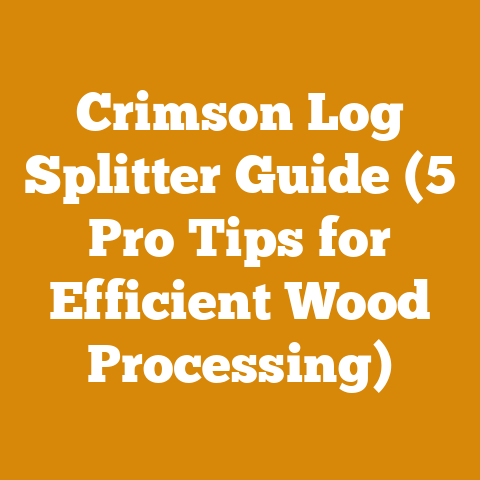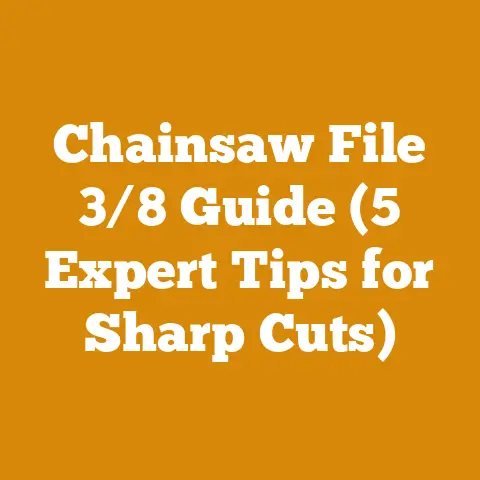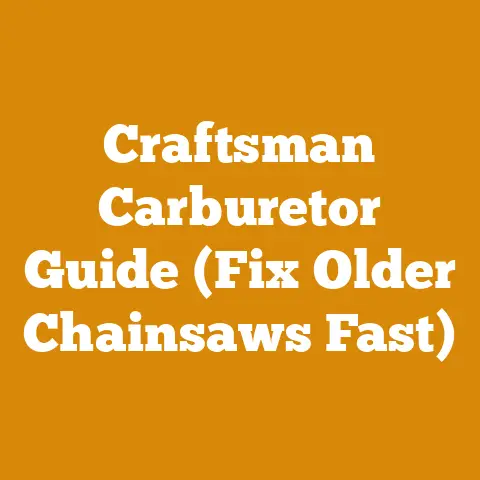Bladed Weed Wacker Reviews (Best Brushcutting Blades Compared)
Alright, let’s dive into the wild world of brushcutting blades! I’ve spent more hours than I care to admit wrestling with overgrown weeds, stubborn saplings, and the occasional rogue blackberry bush. Believe me, finding the right blade for your weed wacker can be the difference between a frustrating afternoon and a satisfying, landscape-transforming experience. Think of it like this: you wouldn’t try to fell a giant redwood with a butter knife, would you? Same principle applies here!
- Types of vegetation they need to cut: Grass, weeds, thick brush, small trees, etc.
- The size and power of their weed wacker: Not all blades are compatible with all machines.
- Durability and longevity: They want a blade that will last.
- Safety: They need to understand the risks involved and how to mitigate them.
- Price: They want to find the best value for their money.
So, let’s get into it. I’ll guide you through the different types of brushcutting blades, their pros and cons, safety considerations, and my personal recommendations based on years of experience.
Understanding Brushcutting Blades: A Deep Dive
Before we start comparing specific blades, it’s crucial to understand the different types available and what they’re designed for. I’ve learned the hard way that using the wrong blade can be dangerous and ineffective.
Defining Key Terms
- Weed Wacker (String Trimmer): A handheld power tool with a rotating head that uses a nylon string to cut grass and weeds. It is typically used for edging and trimming areas that are difficult to reach with a lawnmower.
- Brushcutter: A more powerful version of a weed wacker, designed for cutting thicker vegetation like brush, saplings, and dense weeds. Brushcutters often use metal blades instead of string.
- Brushcutting Blade: A metal blade designed to be attached to a brushcutter for cutting thicker vegetation.
- Arbor Size: The diameter of the hole in the center of the blade, which determines whether it will fit on your brushcutter’s spindle.
- Kerf: The width of the cut made by the blade.
- Tooth Count: The number of teeth on the blade. Generally, more teeth result in a smoother cut but slower cutting speed.
- TPI (Teeth Per Inch): A measure of the density of teeth on a blade. Higher TPI blades are typically used for finer cuts.
- RPM (Revolutions Per Minute): The speed at which the blade rotates. Brushcutters have maximum RPM ratings, and it’s crucial to use blades that are rated for the machine’s RPM.
- Kickback: The sudden, forceful rebound of the brushcutter when the blade encounters an obstruction. This can be dangerous and can cause injury.
Types of Brushcutting Blades
There are several types of brushcutting blades, each designed for specific tasks. Here’s a breakdown:
- Two-Blade (or Three-Blade) Cutting Heads: These are simple, robust blades designed for cutting thick grass and weeds. They are relatively inexpensive and easy to maintain.
- Pros: Affordable, durable, good for thick grass and weeds.
- Cons: Not suitable for thicker brush or saplings, can be prone to vibration.
- My Experience: I started with a two-blade head on my first brushcutter. It was great for keeping the edges of my property tidy, but it struggled with anything more substantial.
- Four-Blade Blades: These blades are a step up in cutting power from two-blade designs and are suitable for cutting thicker grass and weeds, as well as light brush.
- Pros: Improved cutting power compared to two-blade blades, good for light brush.
- Cons: Can still struggle with thicker brush, may vibrate more than two-blade blades.
- Circular Saw Blades (Brush Blades): These blades have multiple teeth and are designed for cutting thicker brush, saplings, and even small trees. They come in various tooth configurations, each suited for different types of vegetation.
- Pros: Excellent cutting power, can handle thick brush and saplings.
- Cons: More expensive than other types of blades, require more skill to use safely, prone to kickback.
- Types of Circular Saw Blades:
- Chisel Tooth Blades: These blades have aggressive, chisel-shaped teeth that are designed for fast cutting. They are best suited for cutting thick brush and saplings.
- Carbide-Tipped Blades: These blades have teeth that are tipped with carbide, a very hard and durable material. Carbide-tipped blades are more expensive than chisel tooth blades, but they last much longer and can cut through tougher materials.
- Brush Blades with Raker Teeth: These blades have raker teeth that help to clear away debris and prevent the blade from binding. They are best suited for cutting in areas with a lot of debris, such as overgrown fields.
- String Trimmer Blades (Plastic Blades): These are plastic blades designed as a replacement for string on a string trimmer. They offer more cutting power than string, but are not as durable as metal blades.
- Pros: More cutting power than string, easy to install.
- Cons: Not as durable as metal blades, not suitable for thick brush or saplings.
- Flail Blades: These blades consist of multiple small, hinged blades that swing freely. They are designed for cutting thick grass and weeds and are less prone to kickback than circular saw blades.
- Pros: Less prone to kickback, good for thick grass and weeds.
- Cons: Not as effective for cutting thicker brush or saplings, can be more expensive than other types of blades.
Understanding Tooth Configurations
For circular saw blades, the tooth configuration is crucial. Here’s a rundown:
- Fewer Teeth (e.g., 4-8 Teeth): These blades are designed for cutting thicker brush and saplings. They cut faster but can be more prone to kickback.
- More Teeth (e.g., 40-80 Teeth): These blades are designed for cutting thinner brush and grass. They cut slower but produce a cleaner cut and are less prone to kickback.
- Carbide-Tipped Teeth: As mentioned earlier, carbide-tipped teeth are incredibly durable and can withstand repeated use in tough conditions. They’re a great investment if you’re dealing with abrasive materials like sandy soil or dense, woody vegetation.
- Insight: I once used a standard steel blade to clear a patch of land near a beach. The sandy soil quickly dulled the blade, and I had to sharpen it constantly. Switching to a carbide-tipped blade made a huge difference in both cutting performance and blade longevity.
Blade Materials
The material of the blade also plays a significant role in its performance and durability.
- Steel: Most common and affordable. Good for general use but can dull quickly, especially when encountering rocks or abrasive materials.
- High-Carbon Steel: More durable than standard steel and holds an edge longer. A good compromise between cost and performance.
- Carbide-Tipped: As mentioned, the gold standard for durability. Carbide tips are brazed onto the steel blade and provide exceptional resistance to wear and tear.
Choosing the Right Blade: A Step-by-Step Guide
Now that we’ve covered the basics, let’s get practical. Here’s how to choose the right brushcutting blade for your needs:
Step 1: Assess Your Needs
What type of vegetation are you primarily cutting?
- Thick grass and weeds: Two-blade, four-blade, or flail blades.
- Light brush and saplings (up to 1 inch in diameter): Circular saw blades with fewer teeth (4-8).
- Thicker brush and saplings (up to 3 inches in diameter): Circular saw blades with more teeth (40-80) or carbide-tipped blades.
- A mix of vegetation: A versatile circular saw blade with a moderate tooth count (20-40) or a combination of blades.
Step 2: Check Your Brushcutter’s Specifications
- Arbor Size: Make sure the blade’s arbor size matches your brushcutter’s spindle size. This is crucial for safety and proper operation. Most brushcutters use a standard 20mm or 25.4mm (1 inch) arbor size, but it’s always best to double-check your owner’s manual.
- Maximum Blade Diameter: Your brushcutter will have a maximum blade diameter specified in the owner’s manual. Do not exceed this limit, as it can overload the motor and create a safety hazard. Common blade diameters range from 8 inches to 12 inches.
- Engine Power: More powerful brushcutters can handle larger, heavier blades. If you have a smaller, less powerful brushcutter, stick to smaller, lighter blades.
Step 3: Consider Safety
- Personal Protective Equipment (PPE): Always wear appropriate PPE, including:
- Eye Protection: Safety glasses or a face shield.
- Hearing Protection: Earplugs or earmuffs.
- Gloves: Heavy-duty work gloves.
- Long Pants and Sleeves: To protect against flying debris.
- Steel-Toed Boots: To protect your feet.
- Leg Guards or Chaps: Especially important when using circular saw blades, as they can protect against serious leg injuries.
- Kickback Awareness: Be aware of the risk of kickback, especially when using circular saw blades. Avoid cutting near rocks, metal objects, or other obstructions. Use a smooth, controlled cutting motion and never force the blade.
- Blade Maintenance: Keep your blades sharp and in good condition. Dull blades are more likely to bind and cause kickback. Inspect your blades regularly for cracks or damage and replace them as needed.
Step 4: Read Reviews and Compare Prices
- Online Reviews: Read online reviews from other users to get an idea of the blade’s performance, durability, and ease of use.
- Price Comparison: Compare prices from different retailers to find the best deal. Keep in mind that the cheapest option isn’t always the best. Consider the blade’s quality and durability when making your decision.
Top Brushcutting Blade Recommendations
Based on my experience and research, here are some of my top brushcutting blade recommendations:
For Thick Grass and Weeds:
- Oregon 2-Blade Brush Cutter Attachment: A simple, durable, and affordable option for general use.
- Specs: Steel construction, 10-inch diameter, universal fit.
- Why I like it: Easy to install and use, great for basic trimming and edging.
- Stihl PolyCut 20-3 Trimmer Head: This is a string trimmer head that uses plastic blades instead of string. It offers more cutting power than string and is great for cutting thick grass and weeds.
- Specs: Plastic construction, compatible with Stihl trimmers.
- Why I like it: Easy to replace blades, more efficient than string.
For Light Brush and Saplings:
- Maxpower 331641B 8-Inch Brush Blade: A versatile blade with 4 teeth that can handle light brush and saplings.
- Specs: Steel construction, 8-inch diameter, 20mm arbor.
- Why I like it: A good balance of cutting power and safety, suitable for a variety of tasks.
- Husqvarna 10-Inch Brush Blade: A similar option from a reputable brand, known for its durability and performance.
- Specs: Steel construction, 10-inch diameter, 20mm arbor.
- Why I like it: A trusted brand, known for quality and reliability.
For Thicker Brush and Saplings:
- ** rotary 9418 Brush Cutter Blade:** An aggressive blade designed for cutting thick brush and saplings.
- Specs: Steel construction, 9-inch diameter, 20mm arbor.
- Why I like it: Excellent cutting power, can handle tough vegetation.
- Forestwest 10″ 80T Brush Cutter Blade – Carbide Tipped: A premium blade with carbide-tipped teeth for exceptional durability.
- Specs: Carbide-tipped teeth, 10-inch diameter, 20mm arbor.
- Why I like it: Long-lasting, ideal for abrasive conditions.
Case Study: Clearing a Heavily Overgrown Fence Line
I once had a client who needed me to clear a heavily overgrown fence line. The fence was completely obscured by a tangle of blackberry bushes, vines, and small saplings. I started with a standard string trimmer, but it was completely ineffective. The string just bounced off the thick vegetation.
I then switched to a brushcutter with a Maxpower 331641B 8-Inch Brush Blade. This blade was much more effective, but it still struggled with the thicker saplings. I had to make multiple passes to cut through them.
Finally, I switched to a brushcutter with a Forestwest 10″ 80T Brush Cutter Blade – Carbide Tipped. This blade was a game-changer. It sliced through the thick vegetation with ease, and I was able to clear the entire fence line in a fraction of the time it would have taken with the other blades. The carbide-tipped teeth held up incredibly well, even after encountering rocks and other debris.
This experience taught me the importance of choosing the right blade for the job. It also highlighted the value of investing in high-quality blades, especially if you’re dealing with tough conditions.
Safety First: A Non-Negotiable
I cannot stress this enough: safety is paramount when using brushcutting blades. These tools are powerful and can cause serious injury if used improperly. Here are some essential safety tips:
- Read the Owner’s Manual: Before using any brushcutter or blade, carefully read and understand the owner’s manual. Pay attention to all safety warnings and instructions.
- Wear Appropriate PPE: As mentioned earlier, always wear appropriate PPE, including eye protection, hearing protection, gloves, long pants and sleeves, steel-toed boots, and leg guards or chaps.
- Inspect the Blade: Before each use, inspect the blade for cracks, damage, or wear. Replace the blade if it is damaged.
- Clear the Area: Before starting the brushcutter, clear the area of any obstacles, such as rocks, branches, or debris.
- Maintain a Safe Distance: Keep bystanders and pets at a safe distance from the work area.
- Use a Smooth, Controlled Motion: Avoid jerky or erratic movements. Use a smooth, controlled cutting motion.
- Be Aware of Kickback: Be aware of the risk of kickback, especially when using circular saw blades. Avoid cutting near rocks, metal objects, or other obstructions.
- Never Modify the Blade: Never modify the blade in any way. This can weaken the blade and create a safety hazard.
- Take Breaks: If you’re working for an extended period, take frequent breaks to avoid fatigue.
- Never Use Under the Influence: Never use a brushcutter under the influence of alcohol or drugs.
The Dangers of Kickback: A Personal Anecdote
I once experienced a close call with kickback while clearing some brush near a stone wall. I was using a brushcutter with a circular saw blade, and I accidentally hit a hidden rock. The blade kicked back violently, and the brushcutter was thrown out of my hands. Luckily, I was wearing proper PPE, including leg guards, which protected me from serious injury. However, the experience was a stark reminder of the dangers of kickback and the importance of being aware of your surroundings.
Maintaining Your Brushcutting Blades
Proper maintenance is essential for extending the life of your brushcutting blades and ensuring their safe and efficient operation. Here are some tips:
- Sharpening: Keep your blades sharp. Dull blades are more likely to bind and cause kickback. Use a file or a grinding wheel to sharpen the blade’s cutting edges. Follow the manufacturer’s instructions for sharpening. For carbide-tipped blades, use a diamond grinding wheel.
- Cleaning: After each use, clean the blade with a wire brush to remove any debris or buildup.
- Lubrication: Apply a light coat of oil to the blade to prevent rust.
- Storage: Store your blades in a dry place, away from moisture and extreme temperatures.
- Inspection: Regularly inspect your blades for cracks, damage, or wear. Replace the blade if it is damaged.
- Balancing: If you notice excessive vibration, the blade may be unbalanced. Use a blade balancer to check the balance and adjust as needed.
Beyond the Blade: Optimizing Your Brushcutting Technique
Even with the best blade, your technique plays a crucial role in achieving efficient and safe results.
- Cutting Direction: Cut with the blade moving from right to left. This helps to prevent kickback and allows you to control the direction of the debris.
- Overlapping Passes: Use overlapping passes to ensure that you cut all of the vegetation.
- Avoid Scalping: Avoid scalping the ground by keeping the blade at a consistent height.
- Use a Harness: If you’re using a heavy brushcutter, use a harness to distribute the weight and reduce fatigue.
- Resting the Blade: When cutting thicker brush, rest the blade on the vegetation before starting the cut. This will help to prevent the blade from binding.
- Patience: Don’t rush the job. Take your time and use a smooth, controlled cutting motion.
Brushcutting in Different Environments
The best blade and technique can vary depending on the environment you’re working in.
- Rocky Terrain: In rocky terrain, use carbide-tipped blades, as they are more resistant to wear and tear. Be extra careful to avoid hitting rocks, as this can cause kickback.
- Wet Conditions: In wet conditions, use blades with good drainage to prevent them from clogging with debris.
- Dense Vegetation: In dense vegetation, use blades with aggressive teeth that can cut through thick brush.
- Slopes: When working on slopes, be extra careful to maintain your balance and avoid slipping. Use a harness to help distribute the weight of the brushcutter.
The Future of Brushcutting Blades
The technology behind brushcutting blades is constantly evolving. Here are some trends to watch for:
- Assess Your Needs: Determine the type of vegetation you’ll be cutting and the size and power of your brushcutter.
- Choose the Right Blade: Based on your needs and your brushcutter’s specifications, choose the appropriate brushcutting blade.
- Purchase the Blade: Purchase the blade from a reputable retailer.
- Install the Blade: Carefully install the blade according to the manufacturer’s instructions.
- Gather Your PPE: Gather all of your personal protective equipment, including eye protection, hearing protection, gloves, long pants and sleeves, steel-toed boots, and leg guards or chaps.
- Clear the Area: Clear the area of any obstacles.
- Start Cutting: Start cutting, using a smooth, controlled motion.
- Maintain Your Equipment: After each use, clean and lubricate your blade.
- Stay Safe: Always prioritize safety.
By following these steps, you’ll be well on your way to achieving efficient and safe brushcutting results.
Conclusion: Mastering the Art of Brushcutting
Brushcutting can be a challenging but rewarding task. By understanding the different types of blades, choosing the right blade for your needs, prioritizing safety, and maintaining your equipment, you can master the art of brushcutting and achieve professional-looking results.
I hope this guide has been helpful. Remember, the key to successful brushcutting is to be informed, be prepared, and be safe. Now go out there and conquer those weeds!






